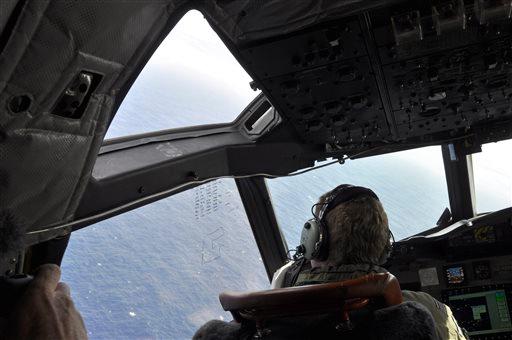A photo allegedly posted from Diego Garcia by Philip Wood, a passenger on missing Malaysia Airlines Flight MH370, turns out to be from 4Chan.
The photo has been promoted heavily by multiple bloggers, including one Jim Stone, on jimstonefreelance.com.
Stone didn’t reveal the source of the image for quite some time but recently revealed that the source was 4Chan.
Someone anonymously posted on the social media website on March 18 under the title “help.”
“I have been held hostage by unknown military personal after my flight was hijacked (blindfolded),” the poster said. “I work for IBM and I have managed to hide my cellphone in my [expletive] during the hijack. I have been separated from the rest of the passengers and I am in a cell. My name is Philip Wood. I think I have been drugged as well and cannot think clearly.”
Wood was the only American aboard the flight, which vanished after taking off from Kuala Lumpur on March 8.
Though it was en route to Beijing, officials believe that the plane was diverted and went westward. At the same time, no wreckage has been found, even now, despite a widespread search.
That has sparked some alternative theories as to where the plane went, including abduction by aliens and controlled flight to Diego Garcia, a United States base on a coral atoll in the middle of the Indian Ocean.
While it’s possible that the photo is in fact from Wood, it being on 4Chan casts serious doubt because many hoaxes have been perpetuated through the website.
Stone claimed that he posted the original photo before the photo was replaced on 4Chan. He says that the EXIF data shows a location on Diego Garcia. And he says that he was hacked within hours of posting the original photo.
Some of Stone’s other writings seem to indicate that he often writes about conspiracy theories. He links to subjects such as “Syria psy op BUSTED” and “Fukushima Sabatoge.”

The location of Diego Garcia.

The photo allegedly posted by Philip Wood.
See an AP update to the story below.
MH370: What do we know? What will we ever know?
BANGKOK— At the time—the evening of March 24—it seemed like the breakthrough the world was waiting for.
In a hastily called speech, Malaysian Prime Minister Najib Razak announced that an unprecedented analysis of satellite signals concluded that Malaysia Airlines Flight 370 “ended” deep in the Indian Ocean, far from any possible refuge for the 239 souls aboard.
Finally, there was a solid explanation for what happened to the aircraft. A much more focused search could begin, and so perhaps could the grieving process for families from 14 countries. Najib’s announcement quieted wild speculation about desert islands and terrorists and covert operations.
But four weeks after the plane disappeared, the apparent pivot in the search is proving to be not much of a pivot at all.
Not a single piece of wreckage from the lost plane has been found, not even after a new analysis led investigators to change the focus of their search yet again. The latest search area is based on extremely limited satellite data combined with radar data taken some five hours before the plane is believed to have gone down. It is, as one search official said, “a very inexact science.”
Australian Prime Minister Tony Abbott, whose country is coordinating the current search effort, spoke of “very credible leads” and “increasing hope” a day before Najib’s announcement. But on Thursday he said the search has become “the most difficult in human history.”
The aircraft could indeed still be in the area planes and ships from several countries have been combing for nearly a week. Currents change the area each day, but on Thursday it was a 223,000-square kilometer (86,000-square mile) patch of ocean 1,680 kilometers (1,040 miles) northwest of Perth.
Each unsuccessful day adds to the skepticism.
“Without any kind of proof, uncertainty rules the day,” said Tim Brown, a satellite imagery expert at GlobalSecurity.org in Alexandria, Virginia. “People still can’t wrap their head around how a modern airplane that big could just go missing in the modern world.”
The focus of the search has changed repeatedly since air traffic controllers lost contact with the Boeing 777 between Malaysia and Vietnam. It began in the South China Sea, then shifted toward the Strait of Malacca to the west, where Malaysian officials eventually confirmed that military radar had detected the plane.
Then came evidence that the plane had continued flying for at least five hours after contact was lost. The plane automatically sent hourly signals to a satellite belonging to Inmarsat, a British company, after the plane’s transponder and all communication systems had shut down. The “pings” did not include specific location information, but the team of experts who studied them said they must have come from one of two vast arcs that ran through both the Southern and Northern hemispheres.
Najib’s announcement reflected a further refinement of that data that determined the aircraft could only have flown south, where it most likely crashed into the sea when it ran out of fuel. Days of costly and fruitless searches off the coast of Perth since then have employed satellites, advanced aircraft and ships, but so far there have only been dead ends.
Last week, using revised estimates of how fast the plane was traveling when it left the Malacca strait, investigators moved the search area hundreds of kilometers (miles) north. But there’s no guarantee that the plane maintained that speed for hours before going down.
“The problem is, we’re dealing with probabilities — estimates,” Brown said of the Inmarsat data. “It’s where they THINK the plane went down.”
Or as Capt. Ross “Rusty” Aimer, a former pilot who now runs Aero Consulting Experts, put it: “Until we find a positive concrete shred of evidence — a piece of the aircraft — everything else is just conjecture, and it could be totally wrong. So far, the satellite calculations have only directed us to oceanic garbage dumps.”
Australian officials have expressed increasing pessimism in recent days. Angus Houston, who heads the joint agency coordinating the multinational search effort out of Australia, said investigators are using computer modeling to determine the plane’s final location, but two key variables needed to calculate that more precisely are unknown: the aircraft’s altitude and speed.
“The starting point whenever you do a search and rescue is the last known position of the vehicle or the aircraft,” Houston said Tuesday. “In this particular case, the last known position was a long, long way from where the aircraft appears to have gone.”
Satellite images taken from the previous search area captured hundreds of possible objects in the water, but searchers in planes and ships found nothing related to Flight 370. In the current search area, even those clues have been lacking.
“We have not had any satellite data, I'd have to say, that has given anything better than low confidence of finding anything so far,” Mick Kinley, deputy CEO of the Australian Maritime Safety Authority, said Tuesday. But he also said plane and ship crews “have by no means exhausted” the search area.
Affected families, particularly those of some of the 153 Chinese passengers, have lashed out at Malaysian authorities for essentially declaring their loved ones dead without any firm proof.
Najib said Thursday that everyone involved in the search is thinking of the families and their suffering.
“I know that until we find the plane, many families cannot start to grieve,” he said. “We will not rest until answers are indeed found. In due time, we will provide a closure for this event.”
Malaysia’s government on Wednesday organized a closed-door briefing for the families in Kuala Lumpur with officials and experts involved in the hunt. Steve Wang, a representative of some of the Chinese families who were also briefed in Beijing via video link, said most relatives remain skeptical.
“They said themselves that there are many different possibilities, but they are judging on the basis of just one of them. We all know this can’t convince us,” Wang said. “Hope dwindles by the day and sadness grows. I believe the plane must be somewhere and someone must know, but we do not know who knows it.
“What else can I do but wait in bitterness?” he said. “Two sleeping pills may get me two hours of sleep if I am lucky.”
Dr. Michael Phillips, a Shanghai-based Canadian psychiatrist, said that without bodies or even wreckage, families are caught in an emotional “no man’s land.”
“A whole bunch of things can complicate grief, but in this situation it’s clearly complicated because they’re not sure the people are dead,” Phillips said. “Your logical head would say, ‘Oh, of course they’re dead,’ but your heart will say, ‘No, no, no, I don’t know.’”
The lack of physical evidence also weighs on the investigation into the crash. Just like on Day 1, every theory remains on the table, including electrical or mechanical failure, terrorism, hijacking and pilot murder-suicide.
On Wednesday, Malaysian Inspector General Khalid Abu Bakar sounded the most pessimistic note yet, warning that although investigations will go on, at the end of it “we may not even know the reason” the plane veered off course.
The most vital clues are trapped inside the plane’s black boxes, or are hoped to be. Information from the flight data recorder will show what the jetliner was doing, but it may not explain why. The cockpit voice recorder, which only records audio from the flight’s final couple of hours, could simply be silent if the pilots were incapacitated before the plane went down.
Wherever those boxes are, they are pinging. Their batteries are designed to last a month. That month runs out Tuesday.





